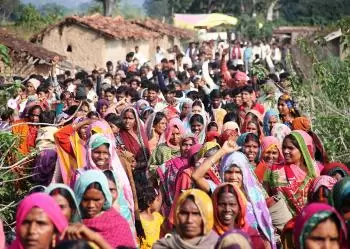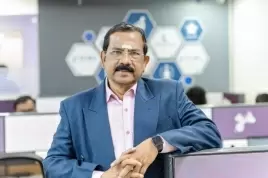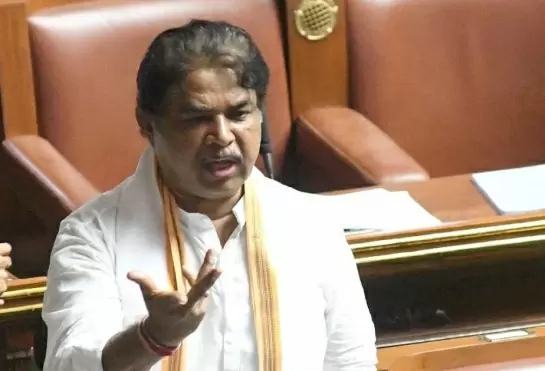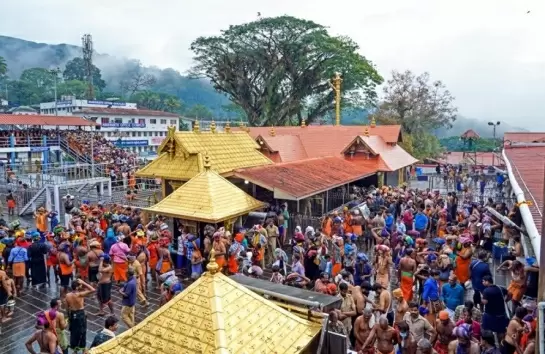Fervent industrial activity has not improved the locals’ income, so their women fight back
07-July-2014
Vol 5 | Issue 27
In the Singrur-Sonbhadra-Singrauli region, better known as the energy capital of India, which stretches across the borders of Uttar Pradesh and Madhya Pradesh, the once lush landscape is now an arid zone covered in a canopy of dust and black soot.
Rampant coal mining, which fuels several power plants and other heavy industries, has diminished the thick forest cover in the area.
 |
|
Women are at the forefront of protest against heavy industrialisation in the Singrur-Sonbhadra-Singrauli region (Photo: Rashme SehgalWFS)
|
Yet, has this fervent industrial activity meant better incomes, stability and prosperity for the 1.1 million people, including tribals, living here? The answer to this question is – no.
Several farmers have lost their traditional means of livelihood in the light of extensive land acquisition and while huge fortunes have been made by unearthing the precious coal and limestone, these natural resources have only intensified their feelings of despair and forced widespread displacement.
Over the last five years, the villagers of Bhandora, Nagwa, Kherai and Samvua watched their world collapse. Today, however, they have started to react - even fight back.
Through the months of March and April this year, as temperatures soared to 40 degrees Celsius, a group of 30 women sat on ‘dharna’ (sit in) outside a big power plant in Singrauli demanding better compensation for all that they have lost.
Their ire was directed not just at that one power plant but at the huge number of power plants – there are 15 so far – and coal mines – 11 in all – that have mushroomed in Sonabhadra and Singrauli, which together account for close to 10 per cent of India’s coal-based thermal energy.
Each of the women who sat outside the power plant gates was carrying a ‘displacement’ card that testified to their refugee status. The women said they had been promised land in addition to employment for a member of their family and free education for their children.
While some of the menfolk did get menial jobs, the women, several of whom are heads of households, insisted that employment should have been offered to them as well.
Typically, the ‘rehabilitation’ process has left much to be desired. Revealed Mahimati from Kherai village, “My family has been given a piece of land three kilometres away from our village but the area has no water. Moreover, it is located near the overburden zone where the debris from the coal mines is being dumped.”
Sadly, Mahimati was not alone in her misery. Another woman complained that the hut that she was shifted into had been constructed next to a manmade mountain of waste. For three months in summer, gales of dusty winds blew into her home and the heat was suffocating.
Even as Singrauli’s Collector M.S. Selvendran admitted that effluents from a major power plant operational in the area had entered the local streams forcing him to order the shut down of the plant, he added that “it was re-opened by an order of the Madhya Pradesh State Pollution Control Board in Bhopal [state capital] and there was little I could do in the matter”.
At the same time, Selvendran insisted that the pollution levels were not as extreme as stated in the latest Central Pollution Control Board report, which dubbed the Singrur-Sonbhadra districts as the third most polluted cluster in India.
“A recent survey undertaken by the state government has shown that air and water pollution levels in Singrauli are not very high. It is the neighbouring Sonbhadra district in Uttar Pradesh that is causing all this pollution due to their extensive use of stone crushing machines. The dust blows in our area,” he pointed out.
Of course, the dark coal dust present everywhere in his district revealed a completely different reality. In fact, Selvendran added that while there are 15 power plants functional there today, with a combined capacity of 13,200 MW, a slew of new plants are on the anvil and that by 2016 the installed capacity will go up by 15,000 MW.
Does this mean that the crisis will deepen for women like Mahimati, who are already crumbling under the pressure of a meagre income and ill health? Unfortunately, yes.
Women have been severely affected both physically and psychologically by this forced poverty and displacement. For starters, they have had to forgo the small income they were making from the sale of medicinal herbs, berries, tendu leaves and other produce gathered from the jungles. And with many of the men having migrated to nearby cities for work, the immediate responsibility to run the household has fallen squarely on their shoulders.
Rued Mangli Khairwar, 68, resident of Amelia village, “A lot of importance has been attached to the coal underneath our homes. It is understandable, because coal is worth a lot of money. But what about those of us who live on the ground above? Do our lives mean nothing at all? I want to ask officials whether they would be willing to give up their own homes so easily.”
Tribal Jeetlal Vaiga, his wife, two sons and daughters-in-law were evicted from their home in the forest of Jharia and moved into a tin shack at the Amlori Visthapan Colony in Amlori to make way for the setting up of a massive power plant.
Vaiga’s wife lamented, “We have been shunted to a one-room tin hut that becomes boiling hot in the summers. There is no toilet and all the excreta and other waste flows out into the open, getting mixed with our drinking water supply. Is this any way to live?”
Existing in unclean surroundings and constantly breathing in coal dust has increased their vulnerability to respiratory diseases, tuberculosis and cancer.
According to The Lancet’s Global Burden of Disease (2011-2012), air pollution from coal fired power plants was responsible for 80,000-115,000 premature deaths in India with diseases such as asthma, bronchitis and cardiovascular diseases showing an upward spiral. Surely, this belt has added to these dismal figures.
Revealed Pria Pillai, an environment campaigner, who has lived in Singrauli district for the last four years, “Large numbers of women have been found suffering from TB, skin diseases and cancer. Men are increasingly turning to alcohol.”
Dr R.B. Singh, who works in the Singrauli District Hospital, confirmed that the last decade has seen a sharp rise in cases of cancer, lung diseases and diarrhoea. “People are coming to us in such large numbers and we are not able to cope with the patient load,” he said.
Naturally, if there have been charges of unfair treatment by the private enterprises thriving here, attempts have also been made to deflect this sharp criticism.
Ramakant Tewari, CEO of Mahan Coal Ltd, claimed that his company had been generous to the locals, “We are giving a widow pension of Rs 1,000 a month and providing their children with free education across all these rural pockets.”
The 30 women who were sitting on a ‘dharna’ for eight long weeks called off their agitation in April-end. While many accused their leaders of having been “bought over by the company”, others insisted that they would continue with their struggle no matter what.
Many have now joined hands with the Mahan Samiti to try and save the Mahan forests that are under threat of acquisition. Sukumari summed up the popular mood, “My husband languished in jail for 26 days all because he wanted to try and save the Mahan forests from coal mining. We know the harmful effects of coal on the environment. Is it a crime to want clean air and water?” - Women's Feature Service















